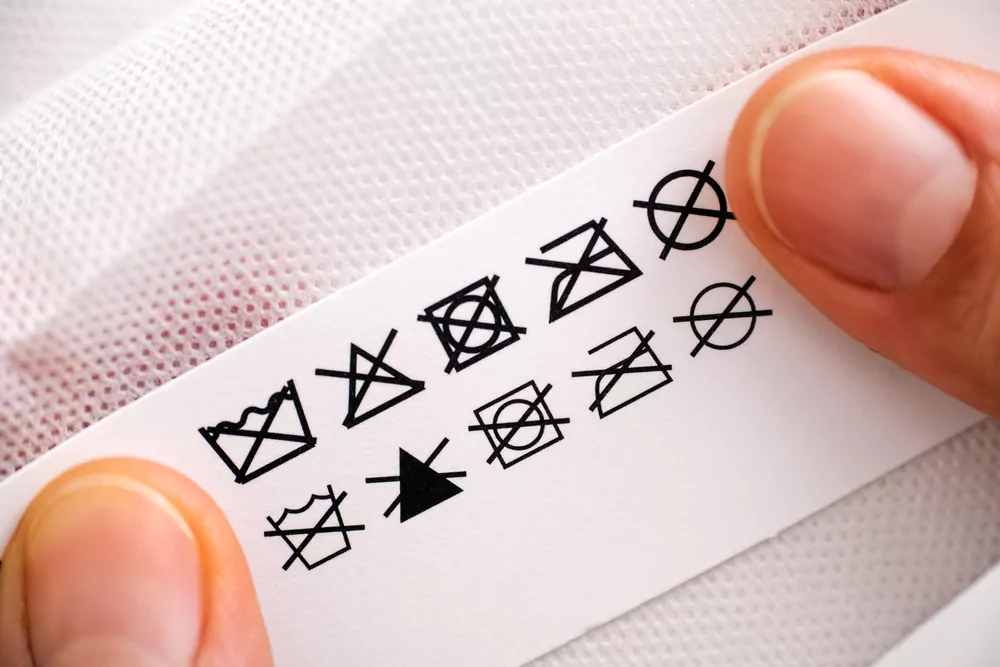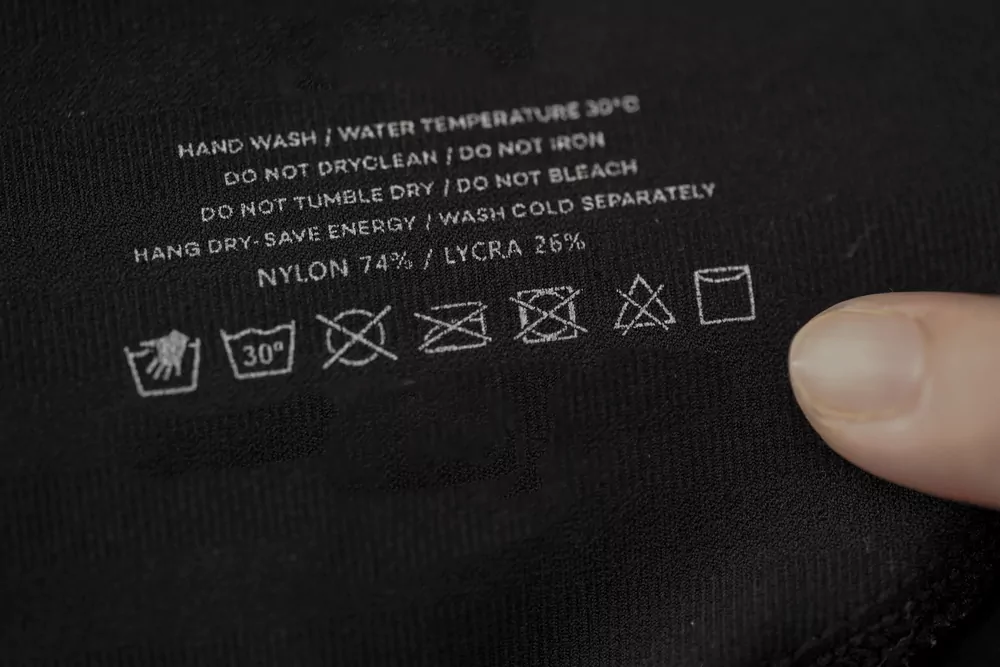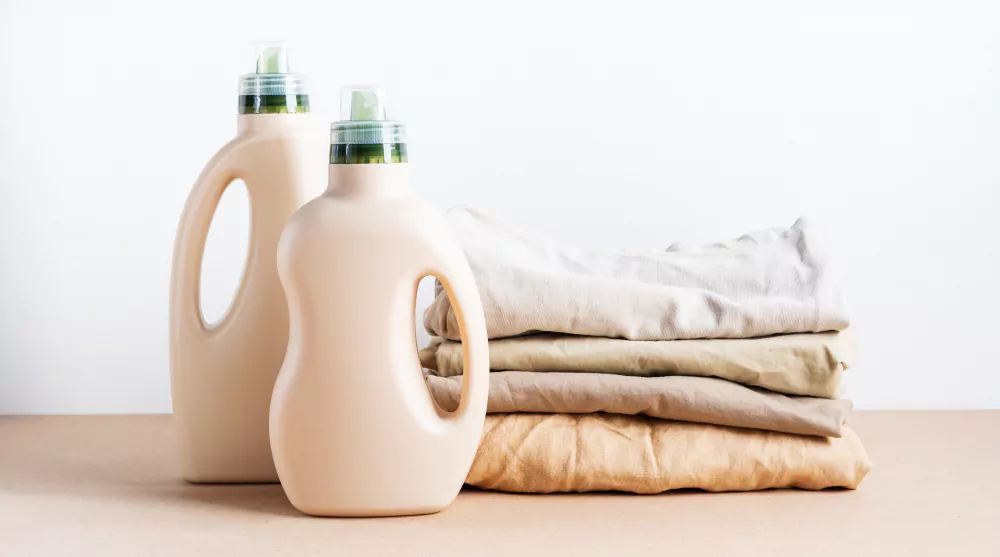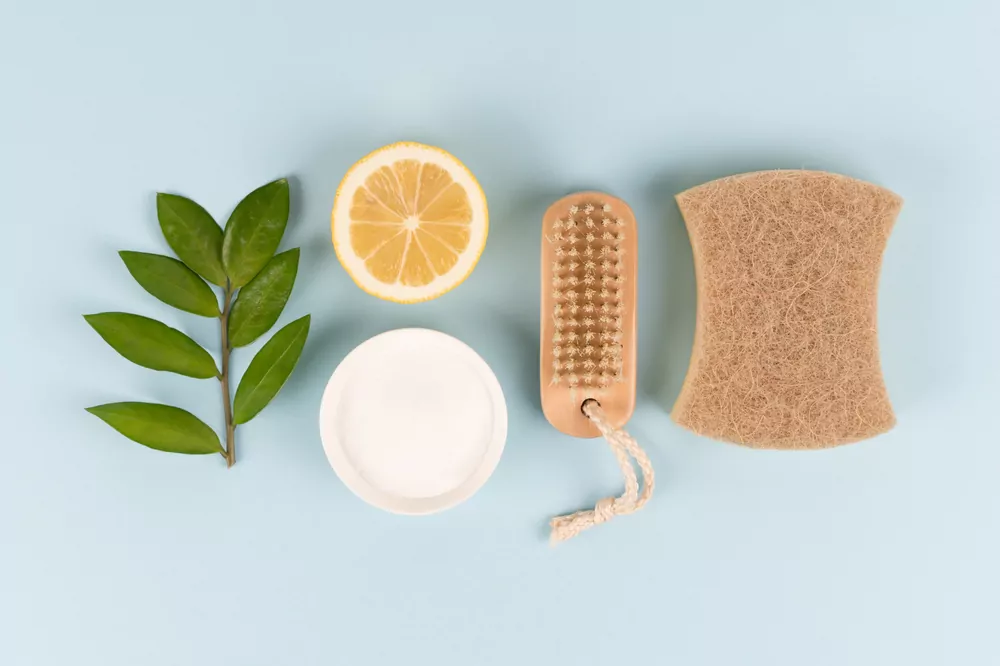The Do Not Bleach Symbol: A Guide to Protecting Your Fabrics

When it comes to laundry, understanding the various symbols on clothing tags is crucial. One such symbol, often overlooked, is the “Do Not Bleach” symbol. It plays a significant role in maintaining the integrity and longevity of your fabrics. This in-depth article will shed light on the Do Not Bleach symbol, its importance, variations, and alternative methods to care for your garments without bleach.
1 What is Bleach and Why is it Used?
Before delving into the symbol itself, it’s important to understand what bleach is and why it’s commonly used. Bleach is a chemical compound that’s predominantly used to whiten clothes and remove stains. The two main types of bleach are chlorine bleach and oxygen bleach. While chlorine bleach is harsher and removes color, oxygen bleach is milder and is often used for colored garments.
2 The “Do Not Bleach” Symbol: Breaking it Down

The “Do Not Bleach” symbol is typically a triangle with a cross (X) through it. This symbol is an international standard, part of the care labeling code which originated in the 1960s. It indicates that the garment should not be washed using chlorine bleach, as it can damage the fabric or cause discoloration.
The Science Behind Bleaching:
When bleach is used on fabric, a chemical reaction occurs. Chlorine bleach, for example, breaks the chemical bonds that make up the chromophore, which is the part of a molecule responsible for color. When this bond is broken, the molecule no longer has color, effectively removing or lightening the color of the fabric. Oxygen bleach, on the other hand, typically contains hydrogen peroxide or a peroxide-releasing compound. It acts by oxidizing the colored stains so that they can be washed away more easily.
Why “Do Not Bleach”?
Bleaching might seem like an efficient way to get cleaner, whiter laundry, but not all fabrics and dyes are resilient enough to withstand the harsh chemicals in bleach. Some reasons to avoid bleach are:
- Fabric Damage: Bleach can break down fibers in fabric, causing them to weaken and eventually rip.
- Color Loss: It can cause colored fabrics to fade or change in color.
- Allergic Reactions: Some individuals are sensitive to bleach and can have allergic reactions to residues left on clothing.
Variations of the “Do Not Bleach” Symbol:
It’s also noteworthy that there are variations of the “Do Not Bleach” symbol.
- Plain Triangle: This indicates that it’s safe to use bleach when needed.
- Triangle with Diagonal Lines: This suggests that only non-chlorine, color-safe bleach should be used.
- Triangle with a Cross (X): The classic “Do Not Bleach” symbol.
3 Understanding Fabric Types

Understanding the different types of fabric is essential when it comes to the “Do Not Bleach” guideline. Here’s how different fabrics react:
- Cotton: Most cotton fabrics can handle bleach, but it should be used cautiously to avoid damaging the fibers.
- Linen: Like cotton, linen is usually bleach-safe unless it’s colored.
- Silk & Wool: These protein-based fibers can be destroyed by bleach.
- Synthetic Fibers: Materials like polyester and spandex are typically sensitive to bleach.
4 Alternatives to Bleaching
If your garment has the “Do Not Bleach” symbol, here are alternatives to keep your clothes sparkling clean.
- Baking Soda and Vinegar: Add 1/2 cup of baking soda along with your regular laundry detergent. For the rinse cycle, add 1/2 cup of vinegar. This combination is great for whitening clothes.
- Lemon Juice: Its natural bleaching properties can be harnessed by adding a cup of lemon juice to the wash cycle.
- Sunlight: Simply hanging your white clothes in sunlight can have a natural bleaching effect.
- Oxygen-Based Bleach: If the label has a triangle with diagonal lines, it means you can use oxygen bleach. It’s milder and generally safe for colors.
- Stain Removal Soaps: Specialized soaps are available which are gentle on fabrics but tough on stains.
- Borax: Also known as sodium borate, Borax is a natural mineral that can be used as an alternative to bleach. Add half a cup to your regular detergent to boost its cleaning power.
- Hydrogen Peroxide: Similar to bleach but without the toxic components, hydrogen peroxide can be used to remove stains and whiten clothes. Use it by adding a cup to the washing machine during the wash cycle.
- Soap Nuts: These are dried fruit shells that contain natural soap. They are 100% natural and biodegradable. Place a few in a cloth bag and add it to your wash for a natural clean.
5 Homemade Bleach Alternatives

If you’re interested in DIY and wish to make homemade bleach alternatives, here is a simple recipe:
Ingredients:
- 12 cups of water
- 1/4 cup lemon juice
- 1 cup hydrogen peroxide
Method
- Mix all the ingredients in a container.
- Use 2 cups for a normal load of laundry.
- Store the mixture in a dark container or a dark space, as light can break down hydrogen peroxide.
6 Wrapping up
The Do Not Bleach symbol serves as a crucial guide for the care and maintenance of your clothing. Understanding this symbol and its variations helps in preventing fabric damage, colour loss, and potential allergic reactions. By opting for bleach alternatives and adhering to general garment care tips, not only will your clothes thank you, but they will also look better and last longer.
If you want more information, check out our blog, “Dry Cleaning Symbols: A Guide to Caring for Your Clothes“.
Community Q&A
About This Article
Hardik Jethva is an experienced author of the BestCheck family. Working from scratch, he has developed an amazing interest in testing and writing about different products in a transparent manner. His writing skills got more audience for BestCheck. Apart from his professional life, Hardik has his eyes on travelling, meditation, eating healthy food, socializing with people, and car rides.
This article has been viewed 557 times.



